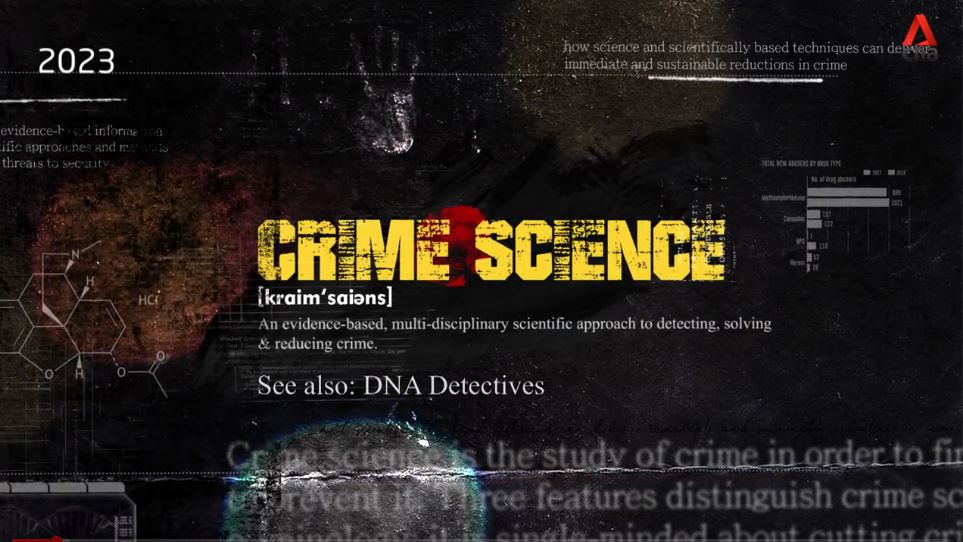
CRIMINOLOGY AS CRIME SOLVING SCIENCE
Crime solving science has three core tenets:
• the application of scientific methods
• the study of crime and security problems
• the aim of reducing harm
Crime science is broad: criminologist may contribute to it without self-identifying as crime scientists. Indeed, its early proponents hesitated to draw its parameters, suggesting they should be defined operationally. Under a shared focus on crime, crime science research transcends traditional disciplinary boundaries. The prevalence of multi- and interdisciplinary work reflects the inherent complexity of crime and its control. The social, physical, biological, and computer sciences—and their associated technologies—all have contributions to make.
Crime science techniques have been applied to a variety of issues: primarily volume crimes (e.g., burglary), but also more serious and complex crimes (e.g., terrorism and human trafficking). There is now substantial evidence of the effectiveness of targeted interventions in tackling crimes by manipulating their opportunity structures. Claims that such approaches are unethical and merely because displacement have been discredited. Crime science now faces other, more challenging criticisms. For example, its theoretical underpinnings are arguably too narrow and the boundaries of the field lack clear distinction. Other challenges include expanding interventions into the online world and resolving tensions around evaluation evidence.
Fundamental Constructs in Crime Science
At its core, crime science involves the application of scientific method, a focus on crime and security problems, and reducing harm.
Science and Scientific Methods
Despite the ubiquity of science in everyday life, its defining characteristics and precise demarcation remain contested. Science is understood in simple and inclusive terms as the systematic and rigorous study of the world and how it works. This definition is reminiscent of a view attributed to Huxley, namely that “science is nothing but trained and organized common sense”. Although there are certainly flaws in this crude working definition of science, a more detailed exposition of the history and philosophy of science would be tangential to discussion of crime science. Additionally, Huxley’s conceptualization of science neatly underlines an important point: hypotheses, as tested in science, do not arise in a vacuum, but are formulated by the scientist on the basis of experience, theory, judgment, and common sense.
At its simplest, crime is activity that violates criminal law. It is well recognized, however, that crime is a social and moral construct. Its boundaries are heavily influenced by sociopolitical, temporal, and geographical factors—a crime in one jurisdiction now may not be one elsewhere and/or at a different point in time.
Harm Reduction
Crime science is typically characterized as an applied subject: the end goal is not so much outputs as outcomes. This pragmatic perspective distinguishes crime science from “pure research,” or the pursuit of knowledge for its own sake. Instead, crime science’s focus is on reducing harms caused by crime and security problems. Harm is another broad construct, incorporating loss or damage that may be physical, emotional, financial, reputational, or social. The term reduction is preferred to prevention because it implies an effort to manage crime rather than the idealistic but ultimately unrealistic pursuit of a definitive end to crime.
The Development of Crime Science
Although crime science was first labeled as such in 2001, its roots go back at least 50 years, to the development of ideas regarding crime prevention through environmental design, environmental criminology, and crime analysis more generally. Environmental criminology involves the notion that the analysis of crime events can contribute greatly to the understanding and control of crime.
A significant part of the perceived need for crime science was to redress this imbalance: to raise the profile of crime reduction, to maintain the argument that opportunities and situational crime prevention have a great deal to offer in crime control, and to re-engage with communities and industries in encouraging their active involvement in reducing crime. Two main points were argued. First, that no other subjects or disciplines were operating in the area of crime reduction. Second, that the way to control crime or reduce the harm it caused required a different set of skills and outlook on crime and criminality than that found in, say, traditional criminology.
Key Theories in Crime Science
Routine Activity Theory
Crime Pattern Theory
Rational Choice Perspective


